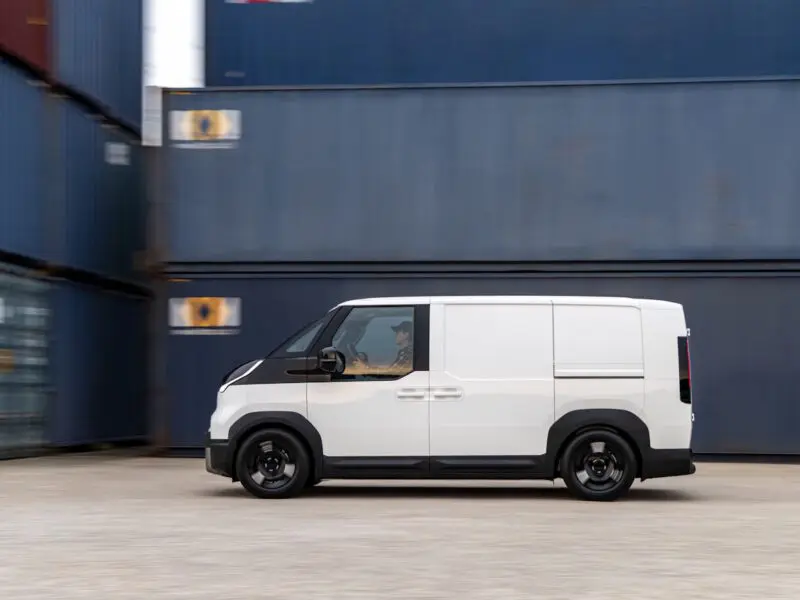
Electrification Accelerates Across the Globe
The electric vehicle (EV) sector continues to surge forward, marking significant milestones in technology, infrastructure, and market growth. The latest round of updates from The Driven reveals a wave of progress stretching from new vehicle launches to breakthroughs in charging infrastructure and policy initiatives designed to expand access to sustainable transport.
From award‑winning electric vans and next‑generation compact EVs to smarter digital tools for drivers and major charging network expansions, the transformation of road transportation is well underway.
Kia’s PV5 Takes the Global Spotlight
Kia’s all‑electric PV5 has achieved the coveted International Van of the Year award, a testament to how rapidly commercial fleets are embracing electrification. The PV5 stands out as a purpose‑built, modular transport solution designed for cargo, passenger, and ride‑hailing applications—all powered by a fully electric platform. Expected to arrive in Australia by late 2026, the PV5 underscores Kia’s strategy to dominate in both passenger and utility EV segments. Recognition from global judges signals not just a design triumph, but also growing confidence in electric light‑commercial vehicles as cost‑competitive and reliable workhorses.
Nio Firefly Nears Australian Shores
Chinese automaker Nio is making waves once again with the impending launch of its Firefly electric hatchback. Right‑hand‑drive production has begun, setting the stage for the model’s arrival in Australia by 2026. Compact yet premium, the Firefly is expected to target city drivers looking for efficiency and style, blending Nio’s signature battery‑swap and long‑range technology with affordability. Nio’s progress hints at a broader trend: the diversification of EV offerings to appeal to entry‑level buyers and urban commuters, not just tech‑focused early adopters.
Google Maps Brings Predictive Charging Insights
Perhaps one of the most practical updates for EV owners is Google’s newly launched feature that predicts charger availability at the time of arrival. The AI‑powered function integrates real‑time usage data with historical patterns to estimate how many stalls are likely to be open when drivers reach their destination. Arriving just before the holiday season rush, this feature could significantly reduce range anxiety and planning hassles. It also highlights how software integration remains just as essential to EV adoption as hardware improvements.
GAC Enters Australia with the Aion V
Global auto player GAC has officially launched its Aion V electric SUV in the Australian market. The company’s competitive pricing, paired with a cashback incentive and complimentary home charger offer, positions the Aion V as a contender to established rivals like BYD and Tesla. The debut marks another step in broadening EV choice for Australian consumers—once dominated by only a handful of brands—with GAC’s promise of solid range, rapid charging speeds, and a suite of advanced driver‑assist technologies.
Tesla Celebrates 75,000 Supercharger Stalls Worldwide
Tesla has reached yet another major milestone: the opening of its 75,000th Supercharger stall, appropriately celebrated in Australia. The commemorative unit features a distinctive glacier blue paint scheme symbolizing the expansion of clean‑energy infrastructure. With a network now spanning continents, Tesla continues to lead the ultra‑fast charging race, ensuring its global drivers—and more recently, other compatible EV owners—experience seamless access to standardized charging. This achievement also reflects the accelerating rollout of charging solutions globally, matching the exponential growth in electric vehicle ownership.
Australian EV Attitudes Evolve
A major survey covering more than 27,000 EV drivers worldwide suggests that Australians are increasingly confident about battery longevity but remain politically divided on brand preferences—particularly towards Tesla. The findings indicate a nuanced consumer outlook: while skepticism toward certain manufacturers persists, faith in the technology itself continues to strengthen. Policymakers, according to the data, are urged to play a more assertive role in sustaining momentum through regulations and incentives, as markets alone may not accelerate adoption fast enough.
China’s Charging Network Surpasses 18.5 Million Points
China continues to set global records in EV infrastructure growth, surpassing 18.5 million individual charging points—a 54% increase compared to 2024. The country’s focus on scalable infrastructure demonstrates how government‑backed initiatives can catalyze rapid EV ecosystem development. With such a vast public and private charger network, China’s model is increasingly seen as a blueprint for other nations aiming to electrify at scale.
Smarter Grants and Greener Roads in Australia
In another push to accelerate uptake, Australia’s latest EV charger grant program targets regional towns and iconic travel corridors. The effort intends to reduce ‘charging desert’ gaps and promote tourism in rural areas by ensuring dependable charging access for visitors. The strategic focus on road‑trip routes echoes efforts in Europe and North America to turn clean mobility into an engine for local economies.
From Hybrids to V2G Innovation: Expanding the Conversation
Discussions across the EV landscape extend beyond vehicle launches to the system‑wide integration of electric power. Industry advocates emphasize the importance of managing the hype around hybrids while pushing for full electrification. Meanwhile, Vehicle‑to‑Grid (V2G) technology is emerging as a key opportunity: turning EVs into portable, intelligent energy storage units that can feed electricity back into the grid. Recorded live at the Everything Electric Show in Melbourne, recent sessions highlight how this approach could decentralize Australia’s power system and enhance grid resilience.
A Converging Future
Across continents, the common narrative is one of acceleration, adaptation, and ambition. Automakers are diversifying portfolios, governments are redoubling infrastructure support, and technology firms are bridging usability gaps. What once seemed an experimental transition is now a mainstream economic and environmental movement.
The collective momentum of innovations—from predictive mapping tools and massive charging networks to new electric models and progressive policy incentives—demonstrates that the EV transition is not confined to luxury markets or early adopters anymore. It is rapidly evolving into the default trajectory of global mobility.
As each new milestone reinforces consumer trust, the electric revolution edges closer to permanence. The latest developments represented in this snapshot of EV news reveal an ecosystem no longer defined by if, but by how fast, the transition will complete.
All EV Sales Research Team
11/22/2025
